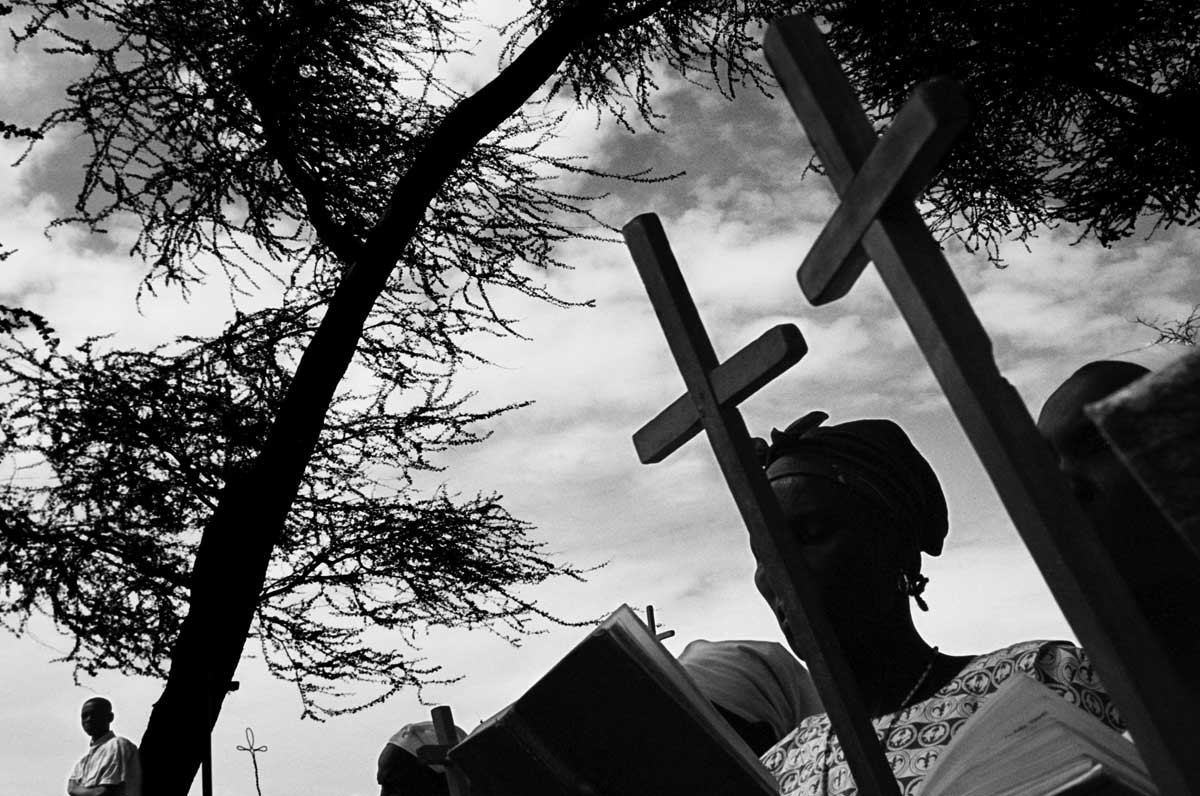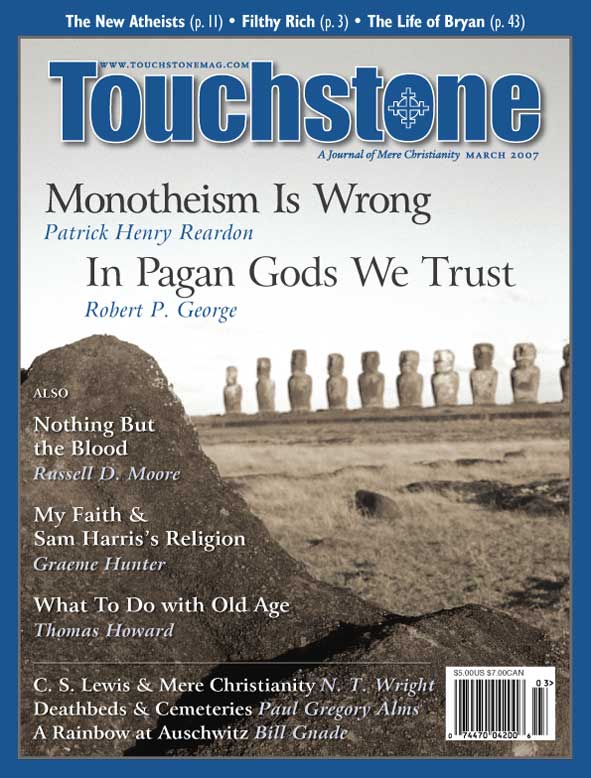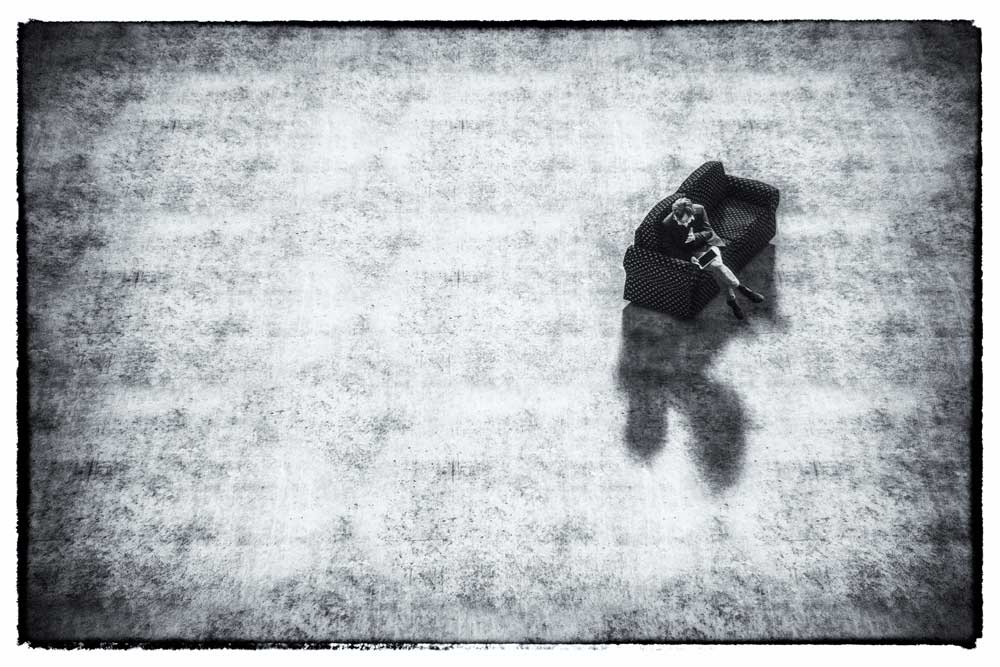View
Death Unplugged
Paul Gregory Alms on the Dying Body as a Window into the Soul
Preacher, they are going to pull the plug. I think you better come over here.” When I hear these words, I recall the familiar terror at having yet again to face death. Not death in a book or as a faraway thought that “yes, people die,” but death coming to someone I know well, death that I will witness in a matter of hours.
I know that death will grab that family on the inside and squeeze from them emotions and grief they did not know they possessed. This family will look to me, the preacher, to speak, to say something.
But I also wonder at the choice of words. “Pulling the plug.” It is a phrase that has become more and more associated with the last moments of human life. The dear Christian woman who called me was not speaking of a dishwasher or a computer but a person, a man she loved, one whose death would break her heart. Yet she used sterile and mechanistic words to announce his coming death. They are pulling the plug.
No More Angels
Increasingly, the experience of death and even, yes, specifically Christian death (that is, Christians dying with Christians there to witness it) is mostly filled not with moments of meditation on Scripture, nor with prayer, nor even with bittersweet memories. No, the hours of passing are used up staring at computer screens that spit out mysterious data we barely understand but think somehow to be crucial.
Even if we are dying at home, we discuss medical issues, pain thresholds, internal organ performance. We watch our loved ones die while watching heart rates and oxygen levels and commenting on the fluctuations of blood pressure and kidney function. We die in hospitals and hospice care where the (mostly caring and loving) attendants adjust morphine levels and our ears are filled with the relentless hum of machines and IV drips. “His blood pressure dropped 10 points last hour. Might be the end.” “Can’t be long. His kidneys have shut down.”
Death comes to us not as angels carrying the soul to distant shores, not as a grim reaper grabbing his prey, not even as one falling asleep. Death comes as system failure, the machine of the body coming to a stop—as planned obsolescence. The doctors and attendants chronicle and interpret the confusing river of numbers and levels and screens with jaggedy lines scrolling on and on.
Healthcare workers are today’s high priests of death, the mediators between us and our loved ones, now patched into the machine of technological medicine, the machine that promises life and ultimately eases our way to mortality. The room becomes suddenly hushed when the one with the stethoscope enters. We watch his movements as carefully as primitive believers watch the gyrations of a witch doctor. Every move is analyzed, we are intensely curious about every word and gesture of the “medical professional,” every body part touched, every machine adjusted. His words are analyzed and pondered.
When we come to questions of death and dying, it is doctors and medical professionals who supply the answers. They speak of potassium levels and respirators and how sorry they are.
A philosophy professor I had in college once commented on how the dominant technology of the day becomes the dominant image we have of our mind and rationality and the workings of our bodies. If gears and pulleys run our machines, we tend to think of ourselves in terms of gears and pulleys.
If planting, harvest, and weather make up our way of life, elements like air and fire and water will suffice to explain the mystery of the human body. If computers or chemicals dominate our work and study, we frame our thinking about our bodies in terms of chemistry and computing. We are so sure that this is indeed the way our bodies work, and then the next age giggles at our simplicity and replaces the image.
Barren Perceptions
It is this way with death. We carry our frames of reference and images to the sickbed. Experiencing death these days is not only a matter of dying in antiseptic hospitals with “do not resuscitate” orders and a mindset that views us as natural systems or machines. We ourselves see things this way.
When we see someone die, it looks like something to us, like something an awful lot like a car engine sputtering when short of fuel or a computer going through its programmed checklist as it shuts itself off. At the threshold of death we do not battle a medical establishment or a naturalistic worldview crashing into piety; we confront our own barren perceptions of the human body and the moment of death.
The actual moment of death has always been viewed as a compressed, pregnant slice of time that distills the essence of that life which is ending. What happens in the last moments of life, the way in which a person dies, is of deep interest to those who live on. Those who grieve, whether devout or not, insist on telling the story of how the loved one died. Those last moments are instinctively held to be important, worthy of being recounted.
The Church has felt this as well. The last moments of the martyrs, filled though they may have been with intense suffering, were seen and proclaimed as physical messages of sanctity. The smell of Polycarp’s flesh burning was experienced as the sweet smell of incense.
The moments of death were messages that captured the essence of the person. The fate of the body carried a spiritual message. Gregory Nazianzus reported that his father died with the words and forms of the liturgy on his lips, thus displaying the content of his character for all to see. What was true of him in life showed itself in his physical posture at death.
Athanasius commented on the feet of St. Antony at his time of death that Antony lifted them up as to greet friends who were coming to him. The opponents of Luther insisted that his death had been a wretched one as his heresy finally racked his body at the moment of truth, while Lutherans still today repeat his last words as a summary of his life and teachings, “We are all beggars.”
What is common to all these last moments is the connection between the spiritual life and the physical life, the interpenetration, if you will, of soul and body. Many people once believed that the actions of the body at the crucial time of death were a reliable window into the state of the soul.
It is this connection between body and soul that we are increasingly unable to make. What we see when someone dies is more and more just a thing that stops working. We pull the plug. In the same way, we swap organs and tranfuse blood without much thought. The body has ceased to be a reliable and holy text on which to read the soul.
Climactic Death
What happens to the body is irrelevant to our free-floating spirituality. We see nothing in the body but sensations, a physicality that has nothing to do with our “spirit,” our true self, the “real me.”
Often in the hours that precede a slow, lingering death, especially when the dying person is comatose, I hear someone say, “That (meaning the body) is not him. He is not here anymore.” The awful scene of bodily failure is divorced from the person who inhabits those arms and legs and face.
There is, at every deathbed scene, a climactic moment when finally death arrives. Breathing stops, the machines are, yes, unplugged, and grief arrives in the heart. This moment may seem like the final act in mortality’s drama. Yet, in a real sense for Christians, death does not “end” with death. That is where it begins. Christian death, death modeled after Christ, may begin when the body dies but has its ending at the tomb, in the dirt.
More than funerals, more than eulogies or sermons or prayers, it is the committal service that anchors a truly Christian view of physical death. The disciplines, rules, and prayers associated with the committal of Christian bodies to the ground confess what the Church teaches about the death of the baptized. Where it is still practiced and has not been twisted by the indulgent egotism that has destroyed much funeral making, in the committal service, one may truly glimpse the meaning of Christian death.
With the reading of Psalms, with shouts of victory, the congregation moves to a hole in the dirt, a casket poised to disappear. All the attention at this point is directed to the dead body. The focus of the rite is not to point to a vague, continuing spiritual existence or to imagine where our loved one “really” is right now, but to consider the remains, the resting place of God-made bones and skin and hair.
We commend the body to rest, hoping in the return of Jesus Christ and the final vindication of God’s creation, now ruined. Here is the antidote to talk of IVs and respirators and morphine. Here the body is buried in the ground like Jesus. Dust to dust. Here we cast all our hope on the God who creates out of nothing, who created bodies from the same dirt that now receives them. Here the final likeness to Jesus that we know in this life is reached: buried in our baptism, buried in our death, just like him.
Final Triumph
Here finally is the real triumph over death, not through chemotherapy or catheters but faith. “I believe in the resurrection of the body and the life everlasting,” we say, even as that body, completely lifeless and void, is swallowed by the earth. Swallowed, consumed, digested even, but not defeated. For, as the committal reminds us, God the Father made that body, God the Son redeemed that body with his blood, and the Holy Spirit made it his temple.
Placing the body in the ground is not the final sadness but the last defiance, for we go to the graveyard believing that on that great Easter to come it will be as St. Matthew says, that the tombs will break open and the bodies of the saints will rise to life.
Paul Gregory Alms (paulgregoryalms.blogspot.com) is pastor of Redeemer Lutheran Church (LCMS) in Catawba, North Carolina. He is a graduate of Concordia Theological Seminary in Fort Wayne, Indiana, with both MDiv and STM degrees. He has written extensively for journals such as First Things, Concordia Theological Journal, Lutheran Witness, Lutheran Forum, The Cresset, and others. He is married and the father of four girls.
subscription options
Order
Print/Online Subscription

Get six issues (one year) of Touchstone PLUS full online access including pdf downloads for only $39.95. That's only $3.34 per month!
Order
Online Only
Subscription

Get a one-year full-access subscription to the Touchstone online archives for only $19.95. That's only $1.66 per month!
bulk subscriptions
Order Touchstone subscriptions in bulk and save $10 per sub! Each subscription includes 6 issues of Touchstone plus full online access to touchstonemag.com—including archives, videos, and pdf downloads of recent issues for only $29.95 each! Great for churches or study groups.
Transactions will be processed on a secure server.
more from the online archives

27.3—May/June 2014
Religious Freedom & Why It Matters
Working in the Spirit of John Leland by Robert P. George
calling all readers
Please Donate
"There are magazines worth reading but few worth saving . . . Touchstone is just such a magazine."
—Alice von Hildebrand
"Here we do not concede one square millimeter of territory to falsehood, folly, contemporary sentimentality, or fashion. We speak the truth, and let God be our judge. . . . Touchstone is the one committedly Christian conservative journal."
—Anthony Esolen, Touchstone senior editor








